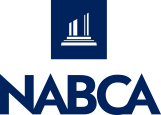Labels on wine, distilled spirits and malt beverages in the U.S. would be required to list alcohol content and nutritional information per serving, plus notification of potential allergens, under two new rules proposed Thursday by the Treasury Department.
Across the United States, it is illegal to purchase alcoholic drinks if you're under 21.
What was once an underwhelming, flat, barely-drinkable substitute for the real thing, is now a booming industry and a truly crushable brew in its own right. We're talking, of course, about non-alcoholic beers.
For the past decade, there has been increasing concern over the use of methanol in alcoholic drinks in some Southeast Asian countries.
Ethanol is the compound that makes drinks alcoholic, but because methanol is indistinguishable in taste, it is often illegally used as a cheaper alternative.
The hangover has finally arrived for spirits and beer companies, as the surge in sales boosted by Americans who stayed at home during the Covid-19 pandemic has ended.
According to figures from Ofcom, only a quarter of adults (26%) consume news in print, with this figure declining year-on-year, and the majority of Generation A and Z get their news content from social media (63%) and online (83%).
Consumer pocketbooks are stretched thin thanks to inflation. Nonetheless, many adult beverage devotees remain bullish on higher-priced options-ones infused with premium, craft, organic and even functional ingredients.
In 1979, the British government became increasingly concerned about the public health risks posed by alcohol. Taking action, it released new medical recommendations as part of a national campaign.
In January 2024, Unimpaired, the only dry bar in Iowa City, closed its doors for good after being in business for just over two years. Its failure was a stark contrast to the thriving downtown Iowa City nightlife scene surrounding it, where the streets are flooded with students all chasing the same thing: cheap, plentiful liquor.
As the landscape of nightlife evolves, a new player is steadily gaining ground: sober bars. No longer confined to the fringes of the social scene, these venues are redefining what it means to go out, offering an alternative to the alcohol-driven bar experience.

